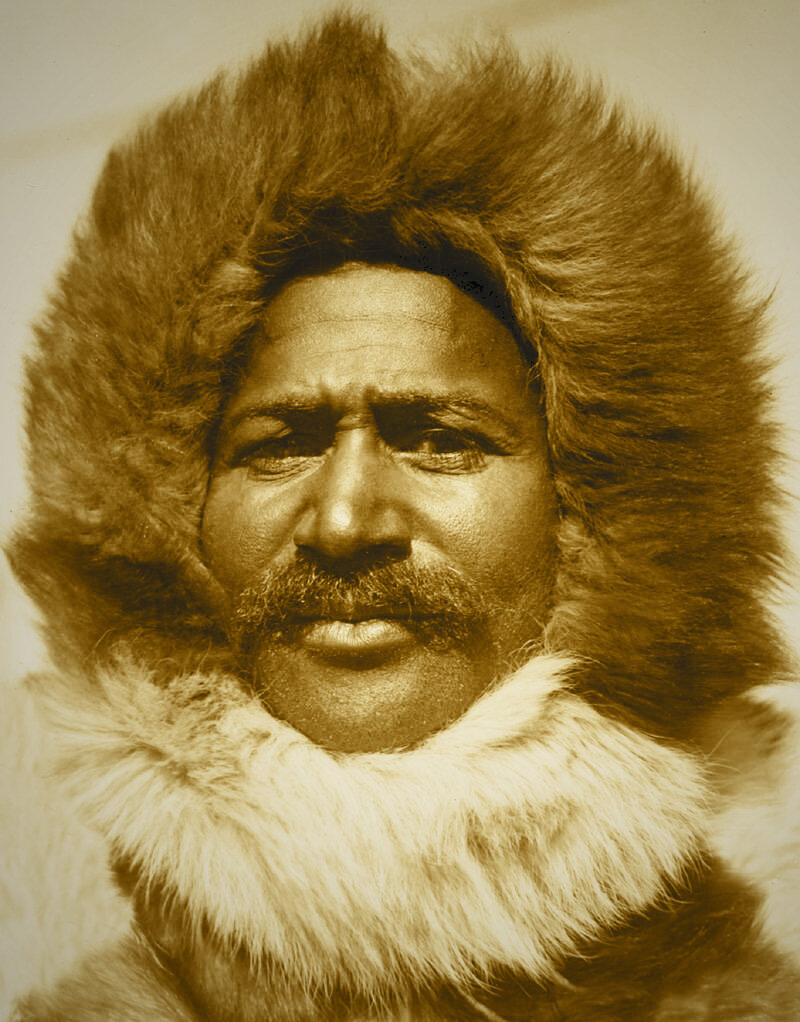Jean Baptiste Point du Sable
The First Settler and Founder of Chicago, Illinois
Painting of Jean Baptiste Point du Sable by Ulrick Jean-Pierre. His name is also spelled “Pointe DuSable,” “Point de Sable,” “Du Sable,” “de Saible,” and “au Sable.”
Jean Baptiste Point du Sable was a pioneer and prominent trader of Haitian origin who, on October 25, 1968, was finally recognized as the founder of Chicago by city and state officials. He had been considered the city’s first non-native settler since the 1850s, but many failed to honor him on the level of white pioneers until several decades after his death. Du Sable was also the first person to perceive the importance of Chicago, then called "Eschikagou," a Native American word used for smelly waters since the area carried the scent of wild onions. Chicago eventually grew from a small trading post to one of the largest cities in the United States. The city is now an important commercial center, but its success was borne out of du Sable’s intimate relations with the native tribes, with whom he collaborated to lay the foundations of what would later become an important center of commerce, trade, and American industry.
Jean Baptiste Point du Sable was born around 1745 in the village of St. Marc on the island of St. Domingue—the area is now known as Haiti. His mother was a free black slave who is believed to have been killed in Haiti when du Sable was ten. His father was a white French mariner who owned a fleet of ships. Upon the death of his mother, who was killed during a Spanish raid on his village in 1755, the young du Sable had to swim out to sea where he found refuge aboard one of his father’s ships.
Du Sable’s father eventually sailed him to France to receive a proper education, and it was there that du Sable developed a love of language. He learned to speak English and Spanish in addition to his native tongue: French. In France, he also became enamored with fine art and culture, and he later acquired several valuable works of art. In time, du Sable began sailing as a seaman for his father. On one of his voyages, du Sable traveled from St. Domingue (Haiti) to the French colony of New Orleans. On route, the ship was damaged, but du Sable abandoned it before it sank. Together with a childhood friend named Jacques Phillippe Clamorgan, an injured du Sable made it to the mainland but without the paperwork that identified him as a free person. To make matters worse, New Orleans had been seized by the Spanish, who would certainly view du Sable as not only a man worthy of imprisonment but also enslavement.
“On route, the ship was damaged, but du Sable abandoned it before it sank.”
To his relief, French Jesuits rescued and protected du Sable while he mended. Du Sable did not remain in New Orleans long. After recovering, he wisely departed the Spanish-occupied territory to explore the wild interior of the North. Du Sable’s friend Jacques Clamorgan, who would later become quite wealthy himself, accompanied him. Du Sable did not traipse off into the unknown foolhardily, however. Before they embarked on their journey, the two men met with a member of the Choctaw people who was a native to the Great Lakes region. He worked for a Catholic mission, and du Sable convinced him to join the expedition north along the Mississippi River. The Choctaw man taught du Sable and Clamorgan the art of trapping animals and routine survival skills. By the next spring, the Choctaw man introduced the two explorers to Chief Pontiac, a legendary intertribal leader of the Great Lakes who led his people against British military occupation in Pontiac’s War.
An 1827 illustration of the cabin belonging to Jean Baptiste Point du Sable. It was built just north of the Chicago River near Lake Michigan in 1779. It is believed the cabin stood approximately where the Tribune Tower is today. Du Sable sold his estate to Jean Baptiste La Lime in 1800, and La Lime then sold it to William Burnett, a business partner of John Kinzie. Kinzie, who was thought to be the original settler of Chicago for years, bought the cabin and property from Burnett in 1804 and sold it in 1828. Fur trader Antoine Ouilmette’s house can be seen in the background.
Source: “History of Chicago: Part 1—Antecedent.” Chicago Magazine 1 (1): 28. Illinois, United States: John Gager & Company. March 1857.
Chief Pontiac grew to like, respect, and trust both men, to the point where he enlisted them to negotiate peace with neighboring tribes such as the Illinois, the Ottawa, and the Miami. Before long, du Sable, Clamorgan, and the Choctaw man trekked throughout the neighboring territories and established trade with various tribes and even Europeans. By the 1770s, du Sable settled in Peoria, Illinois. He was eventually accepted as a member of the surrounding Potawatomi tribe, whose languages he learned. Du Sable’s good relations with the Native Americans encouraged him to establish a farm and trading post on the northern bank of the Chicago River around 1779. While the cabin he built is usually depicted as a modest, humble structure, descriptions from the era reveal that du Sable lived more luxurious than is currently thought.
Documents from the sale of du Sable’s 800-acre property in 1800 describe his cabin as spacious, and complete with a stone fireplace and a large salon with five corner rooms. The estate also enjoyed bakehouses, smokehouses, stables, living quarters for employees—mainly from the Potawatomi tribe—and a garden and orchard residing in a fenced area. And let’s not forget the aforementioned collection of artwork he acquired, in addition to fine mirrors and walnut furniture. Du Sable also owned a supply station, a mill, a dairy, hogs, horses, and livestock.
During the American Revolution, du Sable was forced off his land for a time, and he established another trading post in Michigan. But following the war, du Sable returned to his Chicago estate. Du Sable married a woman from the Potawatomi tribe named Kihihawa, but he called her Catherine. Together they had a son named Jean Baptiste Point du Sable, Jr. and a daughter named Suzanne. Following the sale of his property on May 7, 1800, du Sable returned to Peoria, Illinois before relocating to St. Charles, Missouri. He died in St. Charles at his daughter’s home on August 28, 1818, and was buried in a nearby Catholic cemetery.
You may also be interested in:

This article appears in 45 People, Places, and Events in Black History You Should Know.
Available from Amazon.com, BN.com, and other retailers.





Born a slave, Stephen Bishop was an early explorer who became the first guide at Mammoth Cave, and his discoveries brought him international recognition.